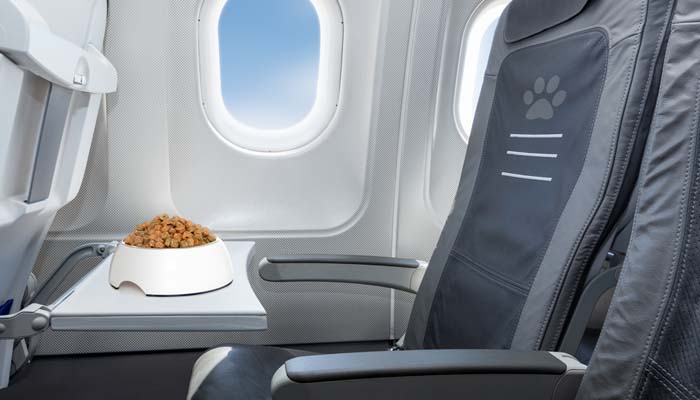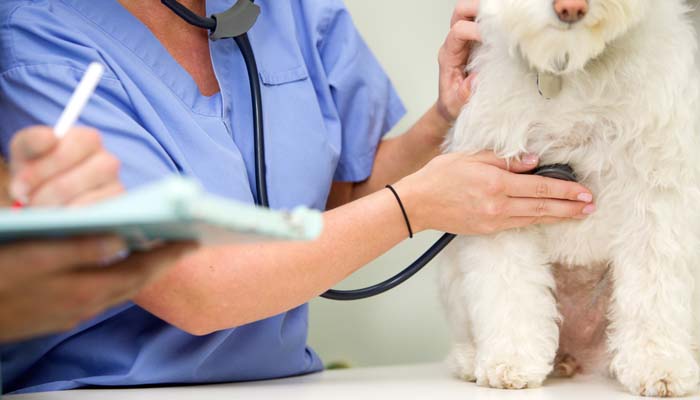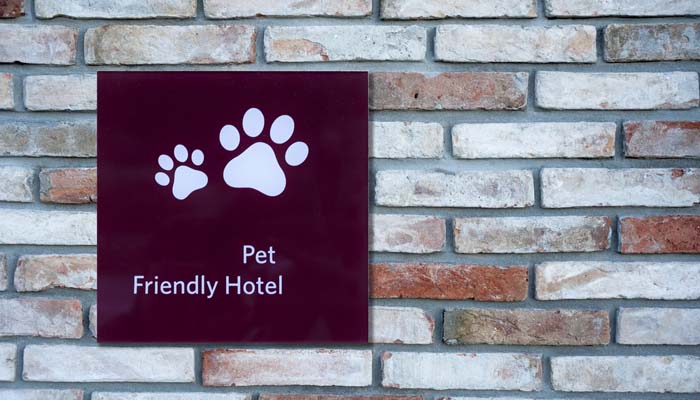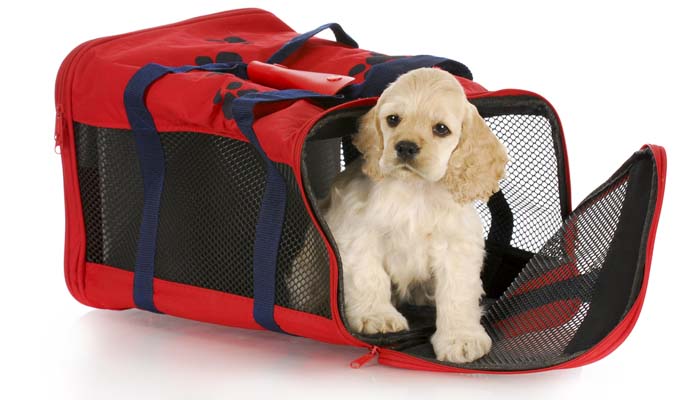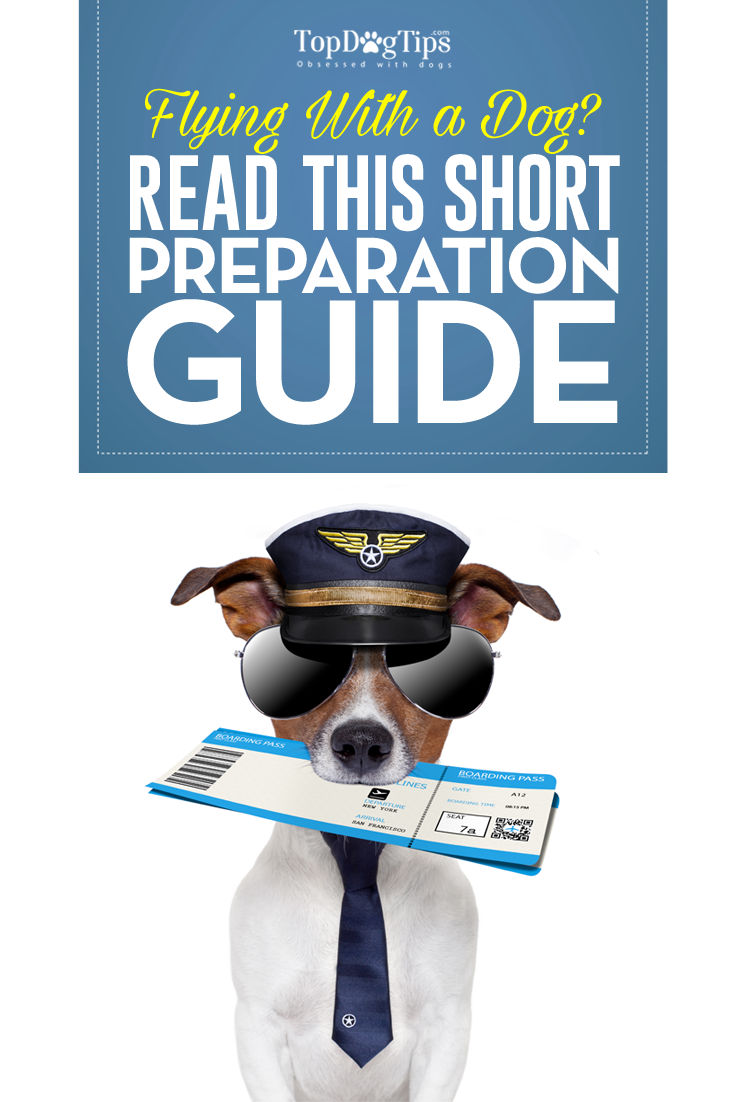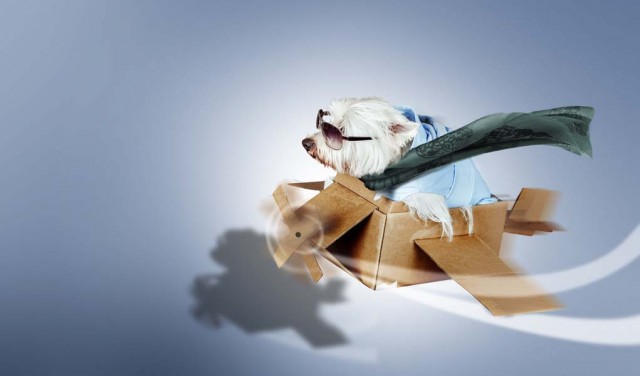
Table of Contents
Proper preparation is an absolute must when you are flying with a dog. It may sound like an easy way to get to your destination, but flying with a dog requires particular supplies, advanced planning, and organization.
The first thing you'll need to do is find an airline that will allow your pet aboard a plane and ask what specific regulations they have.
Every airline is different. Not all airlines allow pets and the ones that do all have their own set of rules.
Some allow small dogs to ride in the cabin with you – provided they are riding in an airline-compliant carrier.
If this is something you're interested in, you'll likely have to book your trip well in advance.
Even if your canine companion will be riding in the cargo hold, you'll still need a compliant carrier.
You'll also need to make sure that your dog has the proper supplies that he'll need during the journey.
Making a list and checking things off as you go is the best way to ensure smooth traveling.
RELATED: 5 Best Airline Approved Dog Carrier Brands

Flying With A Dog: Short Dog Travel Guide for Pet Parents
Pet Identification Precautions
When flying with your dog, have him microchipped before flying anywhere. Unfortunately, pets do sometimes get lost in transit. He could also get lost after you get there. Even the most cautious dog owners lose their pets from time to time.
Dogs love to explore new surroundings and are often very adept at finding an opportune moment to slip past you through an open door. Getting lost while traveling is doubly dangerous for dogs. Being away from home makes it impossible for the dog to find his way back. It is much more likely that he will get hopelessly lost and never be reunited with his owner.
RELATED: Lost Dog: How to Cope With Every Dog Owner's Worst Nightmare
Microchips make finding your lost dog 2.5 times more likely. A 134.2kHz microchip is required by many countries outside of the United States. If you are flying with your dog to another country, have this type of microchip implanted.
Dogs that already have a 125kHz or 128kHz microchip may need to have a 134.2kHz microchip implanted, too.
It is not ideal for the dog to have two microchips, but it will not hurt him and might be the only way he will be allowed in another country. Firmly attach an identification tag to his collar, too. The tag should have the dog’s name and your telephone number printed on it.
Have a cell phone number and another number on the tag. The other telephone number could be for a home phone or work phone. The chances of a lost dog being reunited with its owner are much greater if there are two numbers to call.
Health Requirements
Before flying with a dog, you'll need to take him to see his veterinarian. Make sure he is healthy, free from parasites, and up-to-date on all of his vaccinations. Tell the veterinarian where you are flying with your dog. Vaccination requirements vary from state to state.
RELATED: Dog Anxiety Problems and Treatments
A disease that your dog would not need to be vaccinated for at home could be a big issue in another state. Be sure to attach your dog’s rabies tag to his collar firmly. Contact travel authorities at your intended destination to find out what their requirements are for dogs flying into the country with their owners.
They will give you a list of required immunizations and let you know if they have a mandatory animal quarantine period. Your dog may have to be examined by his veterinarian and then sealed in his crate by the veterinarian just prior to going to the airport.
 If you know your dog is a nervous traveler, ask about medications that can help him stay calm. The Thundershirt works to keep 80% of dogs calm. They are available in a variety of colors and in sizes to fit dogs from 15 to 65 pounds. Thundershirts cost between $40 and $50. Floral essences and certain essential oils might also help to calm your pet's anxiety.
If you know your dog is a nervous traveler, ask about medications that can help him stay calm. The Thundershirt works to keep 80% of dogs calm. They are available in a variety of colors and in sizes to fit dogs from 15 to 65 pounds. Thundershirts cost between $40 and $50. Floral essences and certain essential oils might also help to calm your pet's anxiety.
Hotel Reservations
Make arrangements to stay at a pet-friendly hotel. There are many hotels that are happy to let your pet stay there with you. Most Red Roof Inns, Motel 6’s, and LaQuinta hotels will welcome your dog free of charge.
They may have a weight limit, though, so be sure to clarify if you are flying in with a large or small dog. Keep your dog’s crate in the hotel room and put him in the crate when you leave the room. Your dog will be safer, and he will not be able to make a mess of the room.
Airline Dog Regulations
Call various airlines to find out if they allow customers who are flying with a dog. They will need to know how large the dog is and its breed. There are airlines that will not fly brachycephalic dogs, which are dogs with short muzzles. English bulldogs, French bulldogs, and pugs are some of the more common brachycephalic dogs that cannot fly in an airplane cargo hold.
Their short little muzzles do not allow them to regulate their body temperatures efficiently. Because of that, flying these dogs in the cargo hold of an airplane can be fatal. When flying with a dog, most airlines will require that you bring a small bag of your dog’s best food and two bottles of water.
Dog Crates and Carriers
You'll need to buy an airline-approved dog crate if you are planning on flying with a dog. Ask the airline for their crate requirements before you make your purchase – they aren't all the same. The crate must be large enough for your dog to lay down, stretch out, and turn around comfortably.
 Petmate Sky Kennels are a good example of an airline-approved dog carrier. They cost between $70 and $310, depending on the size you'll need. Spend an extra $25 to $50 for a floor grate. The floor grate rests on the bottom of the crate. Spilled water and urine will remain in the bottom of the crate so the dog arrives at his destination dry and clean.
Petmate Sky Kennels are a good example of an airline-approved dog carrier. They cost between $70 and $310, depending on the size you'll need. Spend an extra $25 to $50 for a floor grate. The floor grate rests on the bottom of the crate. Spilled water and urine will remain in the bottom of the crate so the dog arrives at his destination dry and clean.
Put a washable dog bed or thick blanket in the crate to keep your pet comfortable while flying. Do not worry about spills or accidents. Excess urine or water will seep down to the bottom of the crate, and the bedding will dry.
 Small dogs flying in the airplane with their owner may be able to go in a smaller, soft-sided carrier. Sleepypods are large enough for a 15-pound dog and cost $160 to $180. There are many other airline-approved carriers for small dogs, so do your research.
Small dogs flying in the airplane with their owner may be able to go in a smaller, soft-sided carrier. Sleepypods are large enough for a 15-pound dog and cost $160 to $180. There are many other airline-approved carriers for small dogs, so do your research.
You shouldn't base your decision on price alone. Your dog needs to be safe and comfortable. You'll also want to make sure there is plenty of ventilation, and you have easy access to your pet.
Here are Tips on Traveling with a Dog
Travel Day
On travel day, take your dog for a good, long walk or run before setting out on your adventure. Play with him in the yard or dog park until all his excess energy is eliminated. Give him an opportunity to empty his bladder and bowels right before loading him in the car.
If you are flying with a dog in the morning, give him a meal in the evening on the previous day, and do not feed him before you fly. He will be much more comfortable while traveling and less likely to go to the bathroom in his crate. When the flight does not leave until late afternoon or evening, a light, early morning meal should be fine.
Disclosure: We may earn affiliate commissions at no cost to you from the links on this page. This did not affect our assessment of products. Read more here and find full disclosure here.


